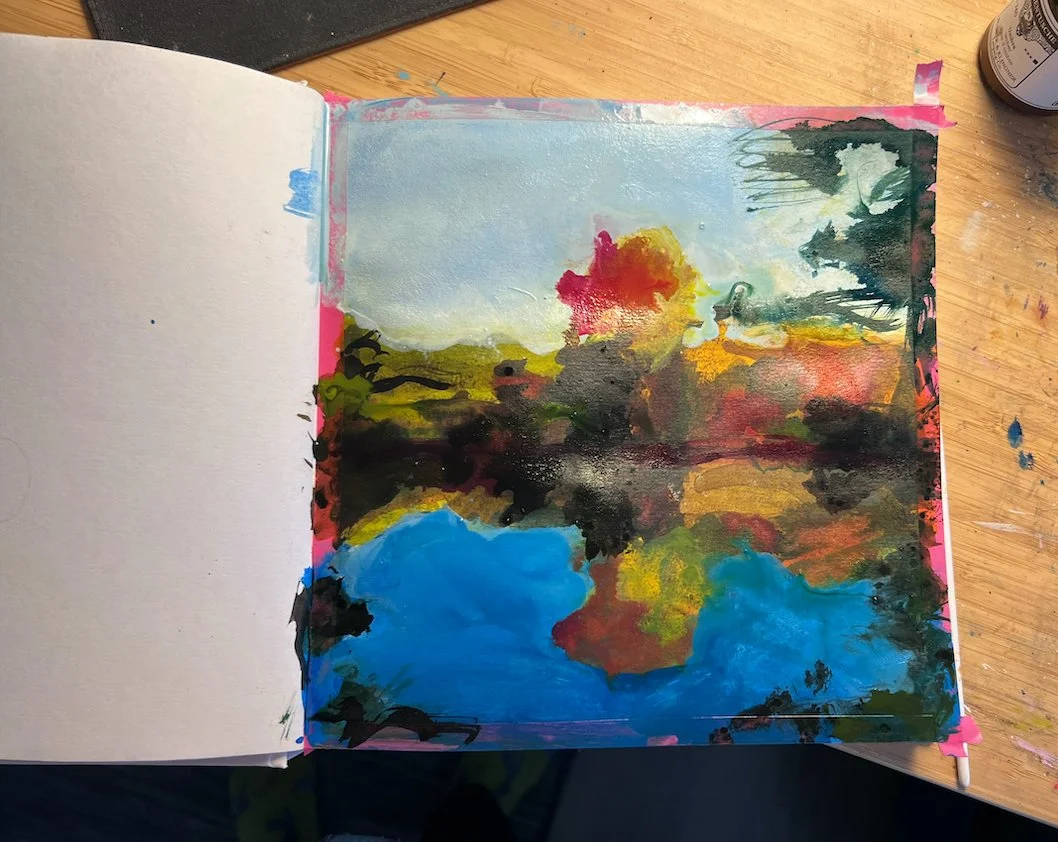Hello, artists!
This page provides everything you need to get the most out of my 2024 webinar series.
2024 Class Recordings
Reference Photo
Basic Materials List
-FW Acrylic Artist Ink by Daler Rowney. I always recommend two of each primary color (red, yellow, and blue). It’s best to get one that leans warm, and one that leans cool. With these colors, you can mix the full rainbow.
Process Cyan
Rowney Blue
Indian Yellow
Process Yellow
Flame Red
Crimson
Burnt Umber
White
- I use Winsor & Neston Series 7 Kolinsky Sable Brushes. If you prefer a synthetic, I recommend Princeton Heritage Series 4050 Synthetic Sable. A range of sizes is preferred, from 2 - 10.
-I mix my colors directly on the page and do not use a palette. However, you may prefer one, and that's fine! The egg carton style is great for a fluid medium like acrylic ink. Reduce your plastic use with this porcelain model!
-I avoid spills and ensure my ink jars are safe and upright by keeping them in a painter's box. A shoebox should work just as well.
Check out this video about how kolinsky sable brushes are made, and why they are so expensive:
Special Materials
-Fun Additional Colors by FW Daler Rowney. These are nice “shortcuts” to have on hand instead of mixing:
Purple Lake
Prussian Blue Hue
Dark Green
Light Green
Olive Green
Yellow Ochre
Flame Orange
-My favorite splayed synthetic brush by Princeton.
-Rohrer & Klingner inks. R&K offers a lot of inks and some are available through the Goulet Pen Company in the US. However, the acrylic ink varieties, Zeichentusche and Antiktusche, are only available in Europe. You can occasionally find small quantities on Amazon.
-Looking to reduce your use of plastic? Use glass jars and cotton rags. To dispose of acrylic ink with minimal environmental impact, avoid pouring it down the drain, which contributes tiny plastic particles to our water system. I collect my used water in a large vase and pour it into a rocky, barren area of my yard dedicated to this purpose.
Cleaning Materials
-Brushes: I clean my brushes with Master's Brush Cleaner and Preserver. Even if your brushes have fifteen years of dried paint on them, this soap will soften and restore them beautifully. Dampen the brush and swirl it into the soap. It will start to form a paste, then work the paste into the bristles with your fingers, paying special attention to the base of the bristles where they enter the ferrule. Work out the color and rinse thoroughly with water (use distilled water if you want to be really kind to your brushes). Continue until no color appears in the soap and the brushes rinse clear.
-Dip pens: I don't clean my dip pens as often as I should, but when I do, I use this pen cleaner.
-Hands/body: normal bar soap with warm water does the trick. For a heavy-duty option, the Master's Brush Cleaner & Preserver offers a hand soap. For an abrasive, pumiced option, I like the old art school standby, Gojo.
-Tabletop/hard surfaces: I carve out a chunk of the Master's Brush Cleaner & Preserver, mix with warm water, and slowly loosen dried paint from my desktop. An abrasive sponge and elbow grease help to lift away the color. It will take a while, but it will work.
-Clothes: Beats me! Let me know if you find something that works.
-How often should you clean your brushes? Acrylic = plastic. Dried plastic is damaging. If you paint with acrylic ink, it's best to clean your brushes (especially sable!) after each painting session. It's a part of my evening routine.
Instructor Artwork
Missy Dunaway
Student Artwork
If you’d like to, please share your artwork with the group! Email your photos to missydunaway@gmail.com and I’ll add them below.
Lea L.





